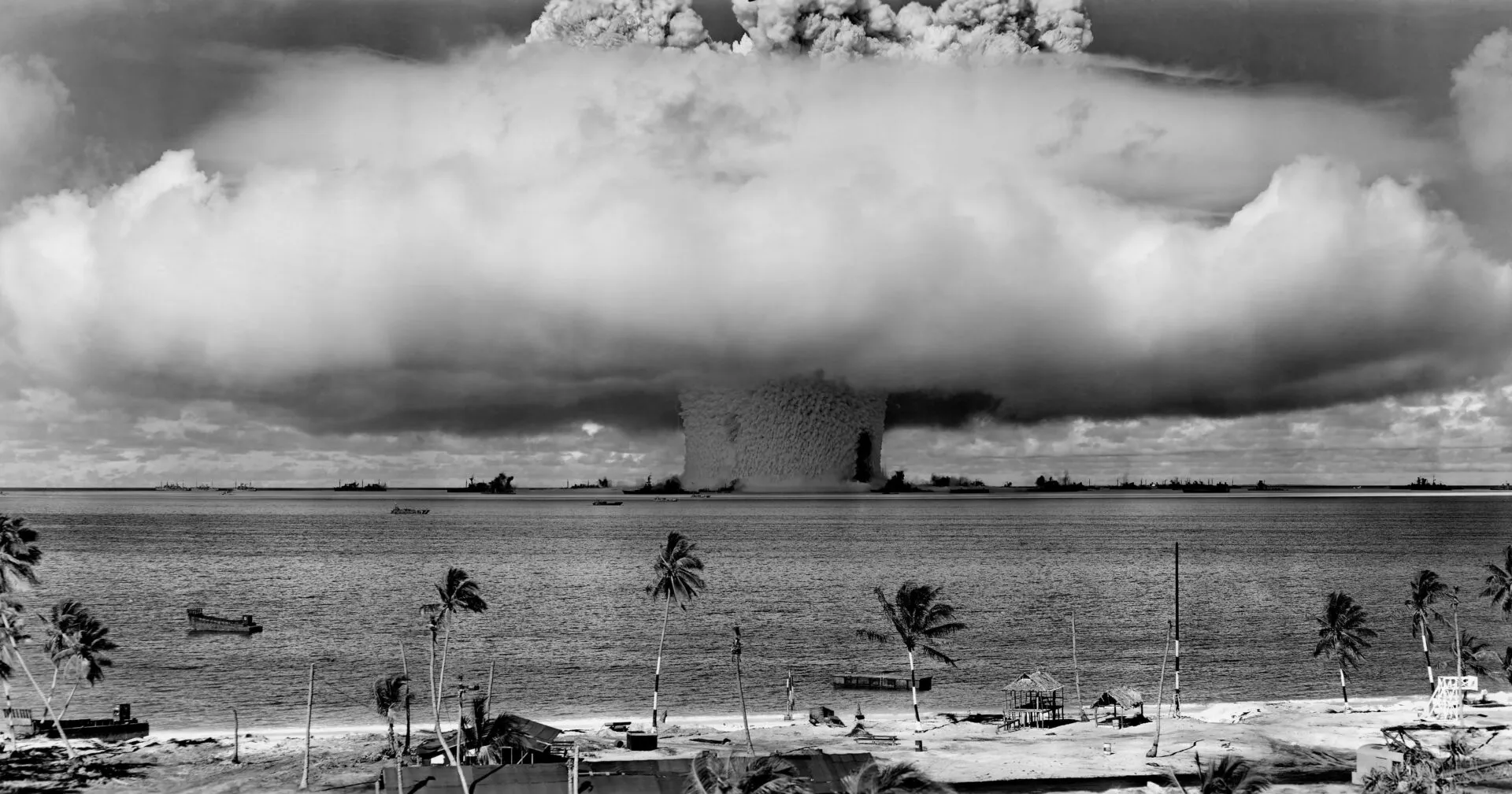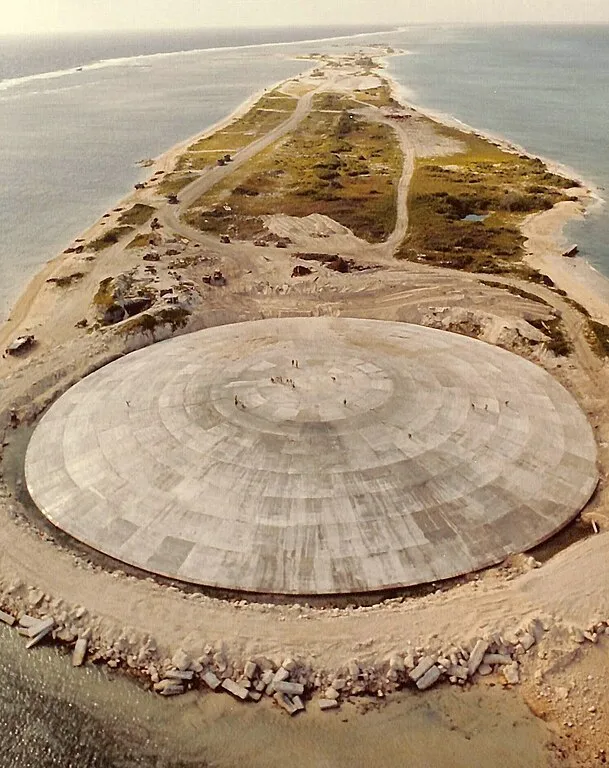Project 2025’s stance on nuclear testing: A dangerous step back
By Tom Armbruster, September 6, 2024


Detonation of atomic bomb during Operation Crossroads Baker on July 25, 1946, the second of several atomic bomb tests to be conducted in the Marshall Islands—and one of the few to be exploded underwater, which was the cause of the column of radioactive sea spray seen here. Public Domain Image, courtesy of US Defense Department.
There are few places more peaceful than a Pacific island. At 6:45 on a March morning in 1954, that peace was shattered by the largest nuclear test in American history: Operation Bravo.
The Bravo test was a thousand times more powerful than the Hiroshima bomb. Now, 70 years later, Project 2025 is proposing a resumption of testing. That should alarm every military service member, downwinder, Pacific Islander, and taxpayer.


As US Ambassador to the Republic of the Marshall Islands, I joined in the solemn observance of “Remembrance Day,” the Marshallese national holiday that pays tribute every March 1 to those who lost their homeland, fell victim to cancer, or were otherwise affected by the Bravo shockwave and fallout.
The shorthand for the 67 nuclear tests from 1946 to 1958, including two undersea tests that wiped out rich Pacific marine life, is the “Nuclear Legacy.” It would be more accurate to call it the “Nuclear Wound.” The tests on Bikini, Enewetak, and Kwajalein wounded the land and the ocean, the people—both Marshallese and American servicemen—and the relationship between our two countries. Healing is marked in decades, if not centuries.
We’ve had the nuclear tiger by the tail for a long time. No leader of any country would want their legacy to be the use of such indiscriminate and destructive weapons. When I joined the Foreign Service from Hawaii, Ronald Reagan was President. A chance for nuclear disarmament came and went with his summit with Soviet leader Mikhail Gorbachev in Reykjavik. Today, the Soviet Union is gone but nuclear weapons are still here. We’ve made progress, but Reagan’s vision of a nuclear-free world remains out of reach. Until we achieve that goal, maintaining a test ban is in everyone’s interest. It is part of the legacy we leave our children.
I’ve stood on the Runit Dome concrete cap that covers the nuclear scrap that was bulldozed into a pit. That is also part of the legacy. As Nuclear Affairs Officer at the US Embassy in Moscow, I also visited some of the vast Russian nuclear architecture. I joined the late Sen. Pete Domenici (R-New Mexico) on a trip to Arzamas-16, a once-secret Russian nuclear city now known as Sarov. We saw abandoned ballrooms with torn curtains and dusty grand pianos, a testament to the empty result of spending on nuclear weapons. A waste of millions of dollars, rubles, or whatever currency used by the nuclear actor.
On page 431, Project 2025 calls for the United States to “Reject ratification of the Comprehensive Test Ban Treaty and indicate a willingness to conduct nuclear tests in response to adversary nuclear developments if necessary. This will require that the National Nuclear Security Administration be directed to move to immediate test readiness… .”
The Project 2025 proposal is a tremendous step backwards. We should be negotiating further cuts in the world’s nuclear arsenals, a prohibition of weapons in outer space, and cleanup of the “legacy” test sites around the world. It would help if Russia were a responsible partner in denuclearization but sadly that is not the case. We could be working together to find ways to mend the planet, rather than inflict further damage that will last for thousands of years.
The planet is resilient. Even sharks have returned to Bikini, although the sons and daughters of those displaced by testing have not. Pacific Islanders would never allow a return to testing in the Pacific, but no one on Earth should ever wake up again to a test like Bravo.
As the coronavirus crisis shows, we need science now more than ever.
The Bulletin elevates expert voices above the noise. But as an independent, nonprofit media organization, our operations depend on the support of readers like you. Help us continue to deliver quality journalism that holds leaders accountable. Your support of our work at any level is important. In return, we promise our coverage will be understandable, influential, vigilant, solution-oriented, and fair-minded. Together we can make a difference.
View Comments
I commend the author for this brave standing. I'm wondering if he has any relationship with the US community on Marshall Islands, where US army and Navy have seen a resurgence af militar activity and where the US military personnel (families included) is enjoying a quite good life; but in the meanwhile the original Marshall population is having no health care or any kind of assistance. (Maybe you could give a look to the documentary 'The next war on China' streaming on Amazon).